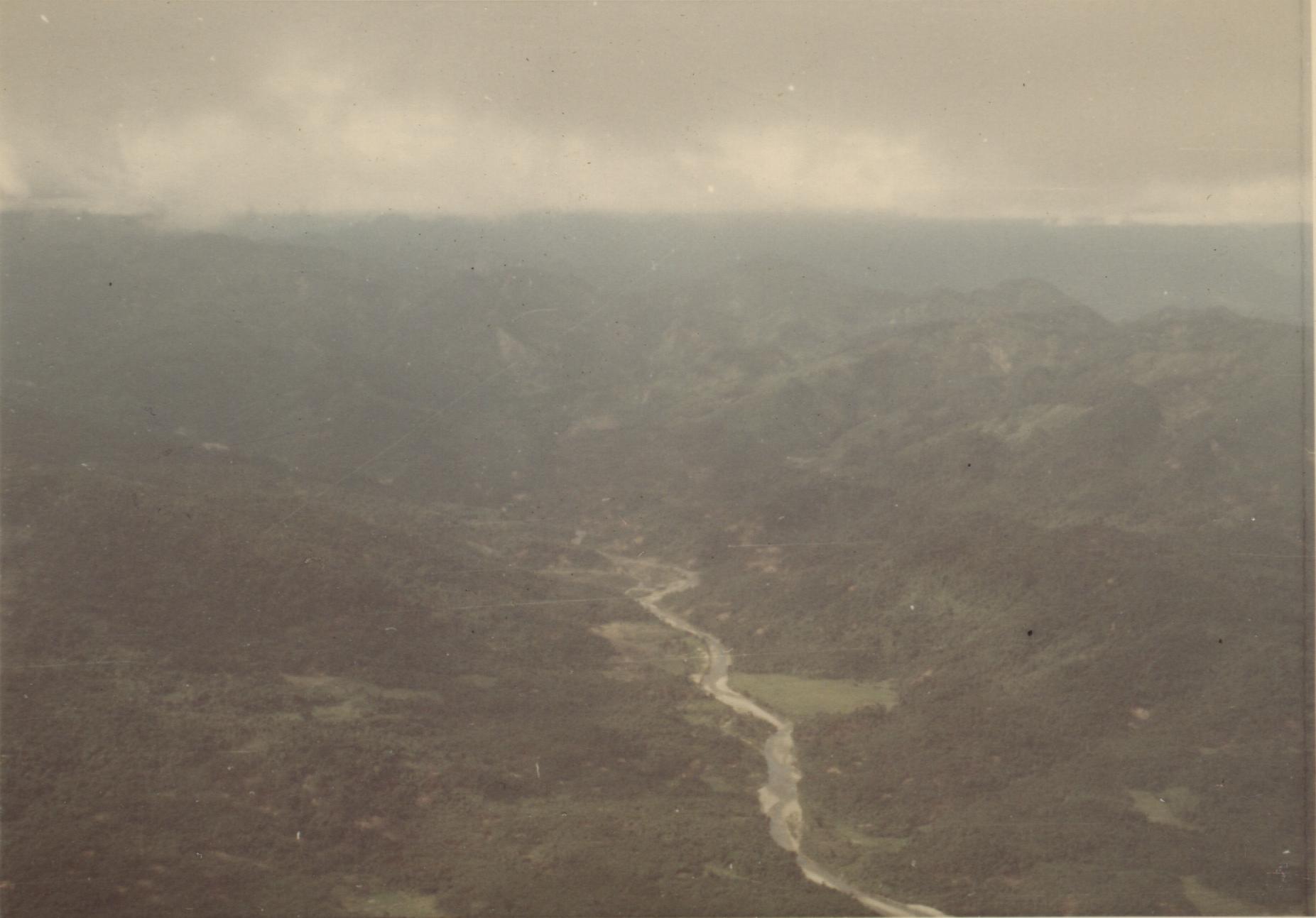A *real* pain in the ass!
Once too often!How did he know we were enroute?
Stated before... but it is true
Every time you left camp on a patrol, you knew that you could encounter a situations which you had not seen or experienced before. Sometimes, those situations repeated themselves! This is one of those repeating scenarios.Some of our Gia Vuc patrols headed northeast -- towards the A-106 Special Forces camp at Ba To. Much like the Gia Vuc camp A-106 guarded the river valley and monitored traffic between the coastal areas and the central highlands. Typically, our patrols would leave camp and proceed up the valley -- parallel to the river. At a predetermined point the patrol would break out of the valley and climb into the jungles -- forming a big circle as we made our way back to camp. Since our mission was intelligence gathering, this 'circling' procedure allowed us to view/sample more area than by simply going to one spot and turning around for the return trip.
It seemed, however, that every time we ran a patrol up the valley, the patrol would come under smiper fire. Every time! We tried to figure this out... did the VC keep a sniper/guard on duty at all times? Or did a VC-sympathizer in our camp tip off the VC about the patrol?? There was really no way of knowing. What we did know was that this sniper could (and did) keep a thirty-man patrol pinned down for hours. It got so that we even expected the sniper attack. We had made plans to deploy a couple two- or three-man squads to flank the sniper once we came under fire.
There were three prime targets in a SF patrol... the two Americans and the radio man. For this reason the Americans never walked close together -- nor did we put the guy with the radio real close to us. If we came under fire, the radio carrier was supposed to go to the senior American -- the de facto patrol leader.
I remember we left camp early one morning on a patrol that would take us up the Ba To valley. Sure enough, we got a few kilometers up the valley and the sniper opened fire from the hillside. Oh, we tried all the tricks... looking for muzzle flash, gun smoke, anything to spot this guy! Our previous patrol had deployed the squads in an effort to find this guy -- of finding a 'needle in a hay stack'. But no success! Here we were -- out in the open, in the river valley, with only low vegatation to hide you. I swear that I learned how to hide behind a single blade of grass! This guy was really startin' to piss us off! We struggled for an hour or more to pinpoint this guy.
Finally, Lt. Carter got real tried of the whole mess and received camp's approval to call in an air strike. Yep, we called for an airstrike on one guy! Soon after we called for the strike, a FAC (Forward Air Controller) showed up in his little Piper airplane. We radio'ed that we would use an M-79 (grenade) shell to mark what we guessed was the sniper's approximate position.
We fired the M-79 shell and the FAC did a beautiful aerial ballet. His twists and turns culminated in a straight-on dive towards the hillside and the sniper position. He fired two smoke rockets at the hillside near where the M-79 shell had exploded and raced to get his butt out of the way. What a sight and sound! In a matter of tens of seconds two "fast movers" came screaming in overhead and blasted that hillside. (Only fear and experience prevented me from jumping up and yelling "Yes!!") We got the patrol up quickly and advanced towards the hill. Nothing. No gun fire. Just some smoke curling around from the F-4's HE rounds.
A radio call to the FAC thanked them for their services and released them for other assignments. We sent two small teams of scouts up the hillside to look for a body. They found nothing. To this day I don't know if the F-4 strike literally blew the sniper out of existence or if he just took off. I do know that we never had the sniper problem again. I can still remember trying to make myself invisible as I lay there on that valley floor.
Looking northeast towards Ba To Special Forces camp A-106. This is a view of the Ba To river valley as we headed to Gia Vuc by chopper. The clouds and low ceiling mark this photo as taken during the rainy season. You can see some blast craters on the hillsides bordering the river.

You can see how the mountains guard the river valley. This rugged terrain posed problems for not only the patrols, but for the A-106 camp itself. See the narrative on the A-103 Camp Life: Medicine Cabinet page.
